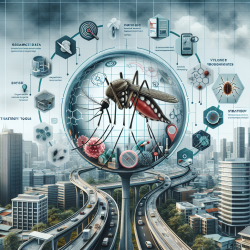Empowering Practitioners: Enhancing Safety in Research Facilities
In the realm of research facilities utilizing nonhuman primates, the health and safety of both the animals and the practitioners are of paramount importance. A recent study, "Worker Health and Safety Practices in Research Facilities Using Nonhuman Primates, North America," offers critical insights into the practices that can safeguard the well-being of all involved. As professionals dedicated to fostering positive outcomes, it is essential to leverage such data-driven insights to enhance our practices.
Understanding the Risks
Nonhuman primates are vital to scientific research, yet they pose potential health risks due to their susceptibility to zoonotic diseases. The study highlights the challenges of diagnosing diseases like tuberculosis and meliodosis in these animals, which can inadvertently expose practitioners to health risks. The presence of viruses such as simian foamy virus and Macacine herpesvirus 1 further underscores the need for stringent safety measures.
Implementing Effective Safety Measures
Data from the study reveals that rigorous quarantine and testing protocols, along with the use of personal protective equipment (PPE), are crucial in mitigating these risks. Facilities are encouraged to adopt the following practices:
- Ensure a 31-day quarantine for newly arrived nonhuman primates.
- Implement comprehensive PPE standards, including surgical masks, N95 respirators, goggles, and specialized clothing.
- Regularly update staff on health risks and safety protocols through continuing education.
Data-Driven Decision Making
The survey conducted by the Association of Primate Veterinarians, with CDC support, underscores the importance of data in shaping safety practices. By analyzing responses from various facilities, the study provides a comprehensive overview of current practices and areas for improvement. Practitioners are encouraged to delve deeper into the data to tailor safety measures that best fit their specific environments.
Encouraging Further Research
While the study provides a robust foundation, it also highlights the need for ongoing research to refine safety protocols. Practitioners should actively seek out additional studies and collaborate with peers to share insights and best practices. By fostering a culture of continuous learning and adaptation, we can ensure the highest standards of safety and care.
To read the original research paper, please follow this link: Worker Health and Safety Practices in Research Facilities Using Nonhuman Primates, North America.










